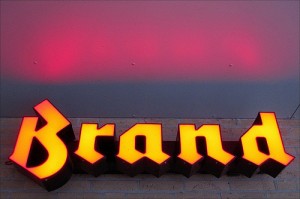 Intro by Ann: This article is written by MyBlogGuest user. It is courtesy of Elite Articles Gallery, our newest feature featuring highest-quality pre-moderated content!
Intro by Ann: This article is written by MyBlogGuest user. It is courtesy of Elite Articles Gallery, our newest feature featuring highest-quality pre-moderated content!
“I liked the shaver so much, I bought the company.”
This was the catchphrase of the 1980s television commercial for Remington Electric Shavers. It featured the company owner, Victor Kiam, who proudly noted he bought the company after his wife gave him his first electric shaver as a gift.
At around the same time, Steve Jobs was thinking about how to get people interested in personal computers. One way was to make the product cool. Until then computers were viewed as industrial machines no individual would ever need to own. Jobs started wearing his “beatnik” outfit consisting of jeans and black turtleneck, and suddenly the machines he was selling seemed downright artsy.
The inspiration behind these two different companies shared the same strategy: It’s not enough to tout your product on its features and benefits alone. You’ve got to be your brand. You represent the values, the aspirations, and the image of your company. People buy your shaver because they figure if you’ve got enough confidence in the product, then why shouldn’t they? If you’re using a product in a new way, and seem cool, then the people who buy your product can be cool too.
People follow your brand and purchase your product because they feel connected to it — and to you. How do you make that connection?
1) Focus On Every Transaction
 Make every transaction an opportunity to promote yourself and your business. From the emails you send to the checks you write, to the website you build, you need to be your brand — and that takes more than just plastering your logo everywhere. It means inventing a style, a way of interacting with your target audience, where that logo or marketing tag gets people interested. That makes them want to be part of your brand.
Make every transaction an opportunity to promote yourself and your business. From the emails you send to the checks you write, to the website you build, you need to be your brand — and that takes more than just plastering your logo everywhere. It means inventing a style, a way of interacting with your target audience, where that logo or marketing tag gets people interested. That makes them want to be part of your brand.
For Victor Kiam, it was “I like the shaver so much, I bought the company.” For Steve jobs, it was “Think Different.” These brand mantras were repeated in multiple ways, across every transaction, for years. That’s what made them so effective.
2) Tell a Compelling Brand Story
The best brands tell the best stories. Why do you think social network news feeds and streams are so popular? Or the reason people like reality TV? People like stories about people like themselves, or, critically, the people who they would like to become.
To build a successful brand story you must start by providing an excellent experience using your products or services. Then the challenge is to create a story for your specific marketing demographic. Instead of talking to all people you need to talk directly to “your people.” Only when they have confidence in what you deliver and your story will they become brand ambassadors.
According to Kathi Kruse, that means having a compelling story of “[H]ow your got to where you are: Your team, your intent, your struggles, your triumphs…[E]verything that made your business what it is today.”
An example of this in action is the behind-the-scenes startup story surrounding the startup of an independently owned neighborhood retailer called George Bowers Grocery. By expressing the hardships of starting their business — in a publication read by many of their core customers — the owners were able to combine brand and a juicy story.
“It was surprising how powerful this was,” says co-owner Katie McCaskey. “We gained new customers and experienced greater loyalty than ever before by telling our story, especially the difficult parts.”
A more commonly known example is Nike’s “Just do it” message. This long-standing story invited every weekend warrior to emulate a sports hero. The average Joes and Janes became their own sports hero! Even the ones who never played sports, or were never good at sports, could at least look like everyone else who played sports. They, too, could just do it, by putting on a shirt and sneakers with a Nike branded swoosh on it.
3) What’s Your Story?
We all have a story. The George Bowers Grocery story demonstrates the six steps to developing a compelling brand story, defined by Jim Signorelli as:
- Collect the Back Story
- Characterize the Brand
- Characterize the Prospect
- Connect the Characters
- Confront the Obstacles
- Complete the Story Brief
To which we would add: keep it simple.
4) Be Brief, Be Consistent
There are just so many words in a marketing tagline, so many seconds in a commercial, so much space for the “About Us” page of your website. They have to encapsulate the essence of what you’re about, quickly and succinctly. Walter Isaacson wrote a 656-page biography of Steve Jobs. But his brand story was two words: “Think different.”
In the book, To Sell is Human: The Surprising Truth About Moving Others, author Dan Pink advises everyone to distill their brand message into a “tweet length.” Messages on Twitter are 140 characters or less — just a handful of words. Distilling your message this way forces you to get on message quickly, just like “Think Different” did for branding Apple and Steve Jobs.
Equally important is to be consistent. You’ve got a plethora of marketing channels available to you, social media, print, Web, video. Your brand story doesn’t change because your marketing channel changes. It’s the same message; the medium doesn’t matter.
5) Be Yourself
Back in the 1980s, Kiam and Jobs had, by today’s standards, crude mass media to work with. You’ve got the opportunity to speak one-to-one with customers using Facebook, Google Plus, LinkedIn, and whole gamut of social media tools to promote yourself and your brand.
It’s not hard to become virtually ubiquitous. The hard part is having something to say that keeps you and your brand fresh, while staying on message.
Remember, though, the whole point of being active in social media is to promote your brand. You’ll need to engage in the fundamentals of content marketing: be honest, be helpful, be informative. Above all, personify all the good things about what it is you are marketing. This is particularly true of smaller enterprises because people associate you personally with your brand.
Keep in mind one guiding principle. You know why it was so cool to use Apple products? Because they actually were new, novel, and “cool.” Why did people ultimately buy Remington shavers? Because just as promised, they delivered a clean shave.
Your brand is your promise to your customers. You have to ensure your company can deliver on that promise. In today’s world your brand is your bond, so to speak.
Be bold, be brief, and be your brand!
Featured image: License: Creative Commons image source
David Soyka is a freelance journalist who writes for Vistaprint, providing personalized business checks and other custom marketing products to help small businesses be their brand. David has taught business writing as an adjunct professor at Rutgers University, and has been a journalist for three decades.
Joseph
Latest posts by Joseph (see all)
- Chatting Guest Blogging at #Pitchboxchat - December 19, 2018
- How to Collaborate on Content: Co-Create, Interview and Find Guest Bloggers! #BizapaloozaChat - December 5, 2017
- Ann Smarty Talking Influencer Marketing at #BW_Chat Twitter Chat - February 26, 2016

David Leonhardt
Focusing on every transaction is like “live in the moment” or “pay attention to the person you are with”. The same principle applies in business as in personal life; when you are with one client, pour all your attention on that client.